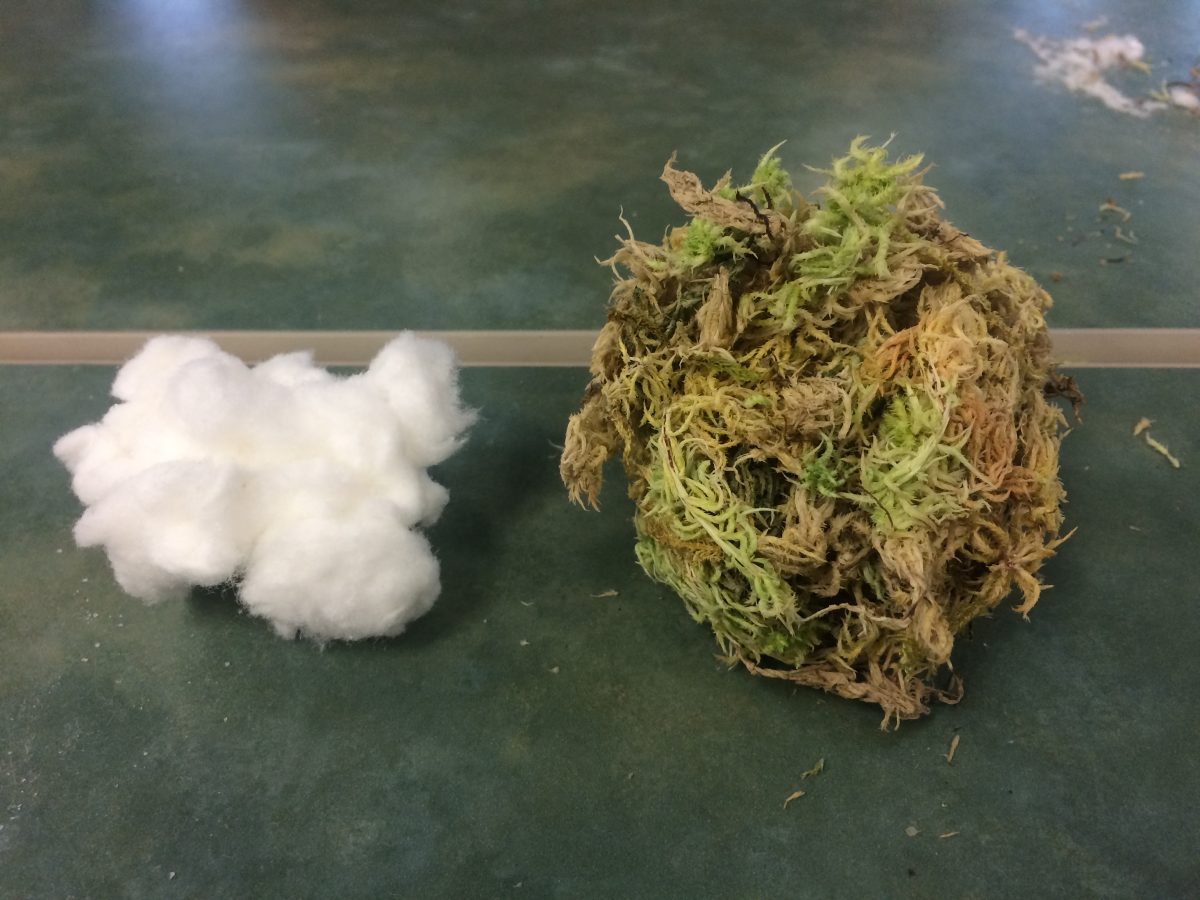I remember as a youngster learning about the absorbency of moss while on a hike with my aunt and my mom out at outer point. I remember squeezing the moss and attempting to wring it out-straight out of the muskeg and watching all of the muddy water running down my hands from the small amount of moss, Angie had handed me. Doing this activity increased my understanding of what muskeg was as well as how certain mosses would and could have been used in the past by the ancestors of this area. It was even more interesting exploring the topic in the class as an adult and having to be quiet about the answer. What was originally speculated on my part as youth was able to be confirmed through a fun hands on experiment showing that this moss could easily hold 10x it’s weight in water. Hands on lessons were always my favorite kinds of lessons because I am an exploratory learner.
One thing that I always looked forward to in elementary school were our annual Sea Week explorations where we would head to various beaches around town to explore tide pools and find sea creatures. It was because of this that I appreciated the landed jelly fish study that was done by Paula Savikko. I also find it exciting that she used it as a source of activism for her students by empowering them to learn through their passion for the environment. That type of place based stewardship is important and it makes the lessons more meaningful.
I also enjoyed the math walk. It gave us an opportunity to explore a place that we may not have been that familiar with, to practice skills that we may have not used in a long time, and to appreciate a sunny day while still being productive for class. Being someone that can not sit for very long in a classroom, I think it is going to be easy for me to incorporate active learning into my lessons and facilitations. All of these experiences were very worth while and I appreciate that we had the opportunity to participate in these exercises. I think that it has enriched and reinforced my approaches to learning.

Thanks for sharing, Cecelia.
I also agree with you in that staying active and doing exploratory learning can increase engagement in students, I think especially when including place-based learning, this sort of active engagement can really bring students to become connected with the wisdom of the peoples whose land this is. I think it is easy for learners to fall back into a dangerous thought of “Oh, Tlingit (or any indigenous knowledge) is learning about the past,” and although that may be true, we know now that the knowledge is past, present, and will last into the future. I think doing an activity such as the moss vs diaper experiment, really closes the gap of cross-cultural unawareness that a lot of students in the Western education system seem to have.